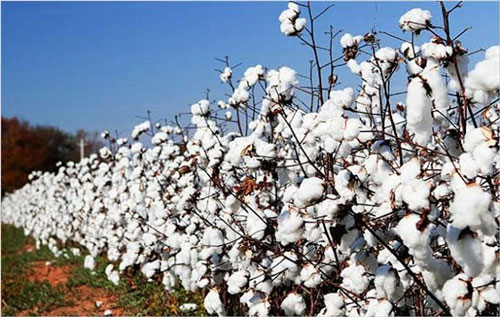Observer Report
Beijing
Pakistan needs to apply new technology and benefit from the Chinese experience to enhance its cotton production, says a Chinese expert Cheng Xizhong.
Quoting President of Pakistan Kissan Committee Malik Iqbal, he said cotton growers had to switch to alternative crops for survival because they can hardly afford the present production cost.
He noted growing cotton was profitable a few years back, but now Pakistan is experiencing continuous rise in production cost due to massive spread of spurious pesticides and frustrated financial incentives.
Currently, Pakistan has a shortfall of 5 million cotton bales, which is lower than the target fixed by Prime Minister Imran Khan for cotton crop in the fiscal year 2018-2019.
According to Cheng, planting cotton is a very hard job. From sprouting to harvest season, farmers worked in the field almost every day from morning till night. Second, there were terrible diseases and insect pests in cotton.
After every few days, farmers need to spray the pesticides. Insects will develop strong resistance to pesticides. The pesticides were highly toxic and very harmful to human and livestock.
He suggested that we should not plant the same crop in the same piece of land every year. The scientific way should be crop rotation.
With reform and opening-up since 1978, market economy replaced command economy and the farmers of my hometown got liberated.
In the early years of reform and opening up, then Chinese Premier inspected my hometown. When he learned about the extreme serious diseases and insect pests caused by decades of cotton planting and that the farmers were losing money by planting cotton, he asked “why do you continue to grow cotton?” He clearly instructed that the farmers should have the final say about what crops to plant.
Later, the farmers abandoned cotton production and planted mulberry trees to raise silkworms, later they became rich.
According to Cheng, there are three main natural conditions that determine the cost and yield of cotton. First, cotton is a light loving crop and needs enough sunlight; second, cotton growth needs to absorb water from the soil, if there is a drought, it will seriously affect the production and yield of cotton; third, cotton growth needs to absorb nutrients from the fertile soil.
Among the world’s top four cotton producing countries, China, India, the United States and Pakistan, Pakistan once had relatively advanced cotton planting technology. However, now Pakistan lags behind in the development and application of new cotton planting technologies, and the government’s investment for development of new technologies in this area is also obviously insufficient, which leads to a decline of cotton yield. In the present fiscal year, Pakistan’s cotton production is estimated to be 10.2 million bales, while the expected target is 15 million bales. Pakistan is both a big cotton production country and a big textile production country. Now that there is a gap of about 5 million bales, in order to maintain the operation of textile industry, it is understandable and necessary to take measures to import some cotton.
But in the long run, it is necessary to solve the problems in cotton production, develop new technologies, and take measures to fully mobilize the enthusiasm of farmers to grow cotton.
Cheng emphasize that research and development of new technologies is the key to solve the current cotton production problems in Pakistan, reports Gwadar Pro App.










